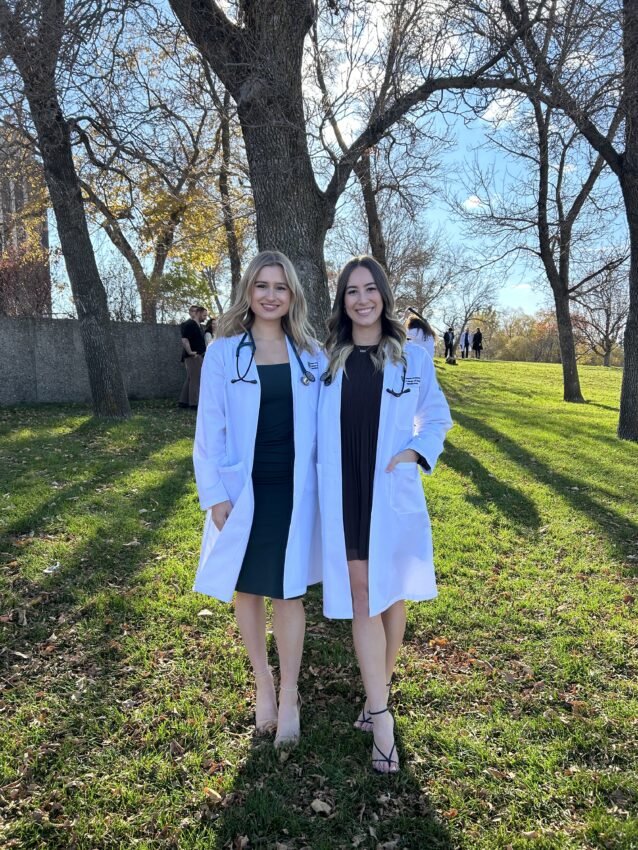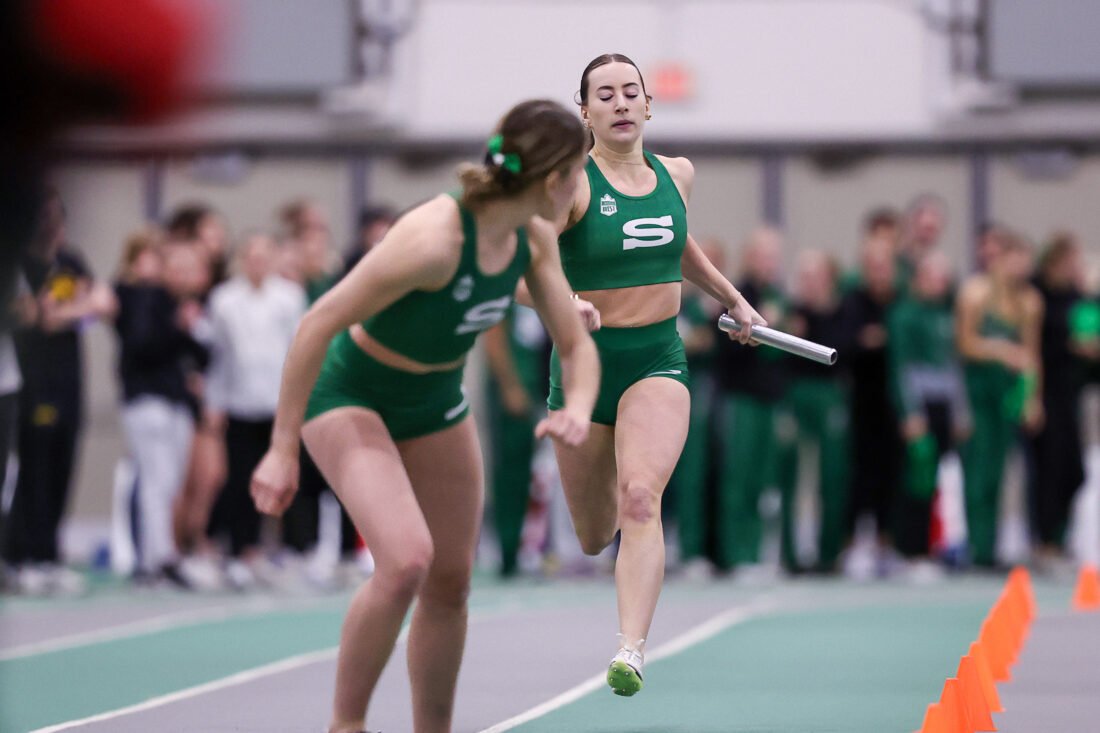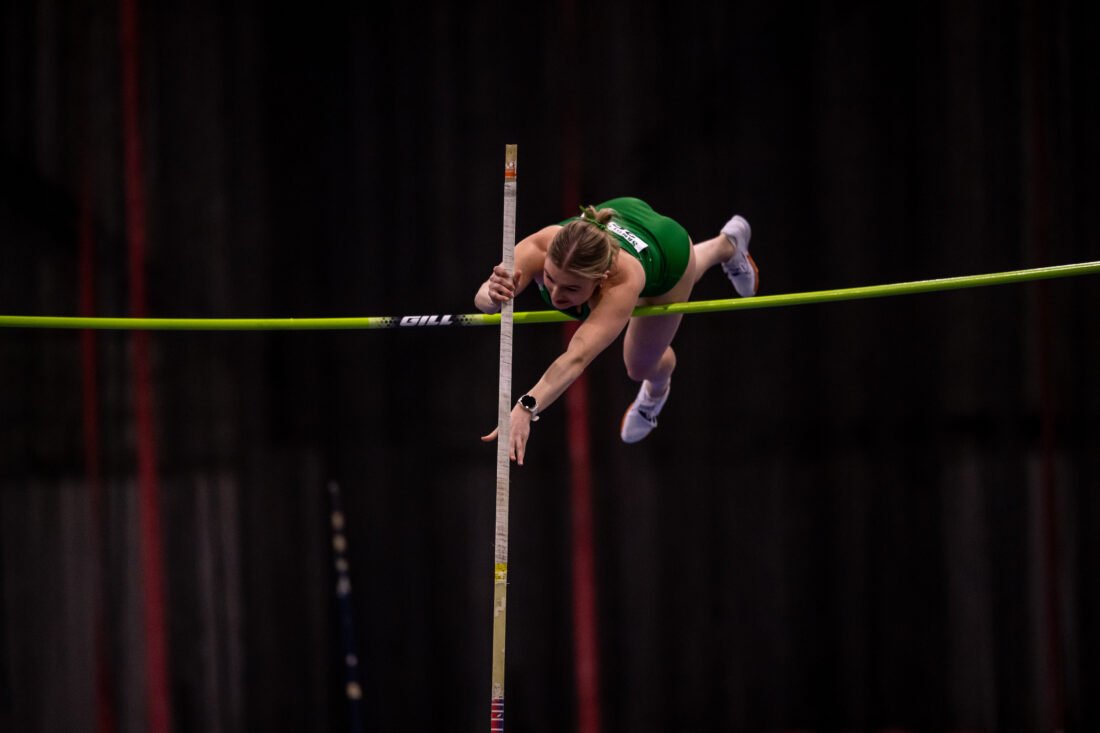Sierra Leonard and Brianna Andrews reflect on navigating their first year of medical school while competing as Huskie athletes.

Huskies women’s track and field athletes Sierra Leonard and Brianna Andrews embody the phrase “student-athlete”, striking a delicate balance between track meets and medical school. Adopting a focused yet flexible mindset has been crucial for both athletes as they pursue this daunting task.
Leonard was originally a competitive gymnast who transitioned into pole vaulting during her high-school years. In an interview with the Sheaf, Leonard identified three key components of gymnastics that ensured a seamless transition into pole vaulting.
“When you’re running with a big pole in your hand towards a mat and launching yourself in the air, it takes a level of fearlessness and bravery that comes from gymnastics… There is also the body awareness in the air and the strength developed from gymnastics that plays a big part.”
Prior to signing with the Huskies following her medical school admission at USask, Leonard excelled in pole vault with the University of Alberta Pandas, winning two Canada-West bronze medals during her four-year tenure.
Andrews similarly began as a gymnast, but competed in various categories like jumps, hurdles and sprints throughout high-school, eventually honing in on sprints and relays during her stint with the Huskies. Along with the body awareness that benefits a gymnast shifting to track and field events, Andrews elaborated on the similarities between the two sports from a mental standpoint.
“The training demand with [gymnastics] was high … you’re leaving school early and have commitment to the sport and a natural drive for competitiveness … Since I moved from an individual sport [like gymnastics] to track which is primarily individual, I enjoyed moving into the track environment.”

Both athletes also prioritized academics throughout their undergraduate years, evidenced by Leonard achieving Academic All-Canadian status four times and Andrews being named to the list thrice. Leonard acknowledged that the balancing act between athletics and academics was “overwhelming” at times, requiring difficult sacrifices such as denying hangouts with friends or volunteer commitments. Andrews treats track as an outlet for socialization to make it more enjoyable, and emphasizes the importance of a consistent routine to manage both commitments efficiently.
“You have your set training time, so do your best to remove yourself from the academic side of things at practice … When you get home, decompress and hit the books,” Andrews said.
While the time management skills that both athletes developed in their undergraduate degree are invaluable, they acknowledged that a shift in mindset and training regimen was necessary once they began medical school.
Leonard likened medical school to a “full time job,” filled with classes, readings, assignments and clinicals. The heavier workload is partly explained by the fact that the core foundational course in Medicine is worth 21 credit units for one semester, which is equivalent to seven undergraduate courses. For comparison, a typical undergraduate semester is five courses.
Managing the workload and their commitment to track requires a collective effort, and both athletes expressed gratitude for their coaches’ flexibility.
“I used to train three-four hours a night for five-six days a week. Now, if I have a big exam coming up, I’m really lucky with my coaches [as] we have an agreement that I may have to miss a practice every now and then,” Leonard said.

Pole vaulting and sprints may seem worlds apart from medicine at first glance, but Andrews and Leonard recognized aspects that are applicable to both.
Andrews highlighted the importance of recovery to her performance both in sprints and as a medical student.
“In track, you’re always hearing about physiotherapy, chiropractors, massage, hydration, sleep and nutrition. Track is a unique sport where any one of the above being thrown off can cause a decline in your performance … After a long day of lectures, I found that if I go directly to studying, I’m not productive that day … Recharging my own way after training or after lectures has been key.”
For Leonard, the mental toughness she has acquired from enduring the ups and downs of pole vaulting has been critical in maintaining a positive mindset through medical school.
“In medicine, there are times when you don’t perform as well as you want to and things are not really going your way. Dealing with that adversity by putting the work in and knowing that I will eventually see results is something that I learned through pole vaulting, and that’s helped me a lot in medicine.”
As the 2024 Canada West Track and Field Championships in Edmonton from February 23rd to 24th draw near, Andrews is working on reducing her times for the 60 metre sprints. Meanwhile, Leonard is aiming for a podium finish and a potential USports nationals qualification by matching her previous personal best scores. Both athletes are looking to contribute to a perennial powerhouse Huskies women’s track and field team that has won five straight Canada West titles and is on a quest for their sixth.
For any athletes currently pondering the feasibility of competing and attending professional school concurrently, Leonard offers the following advice:
“It might seem like it’s not possible and it may take sacrifices, but if you love medicine and you love your sport, you can make it work.”